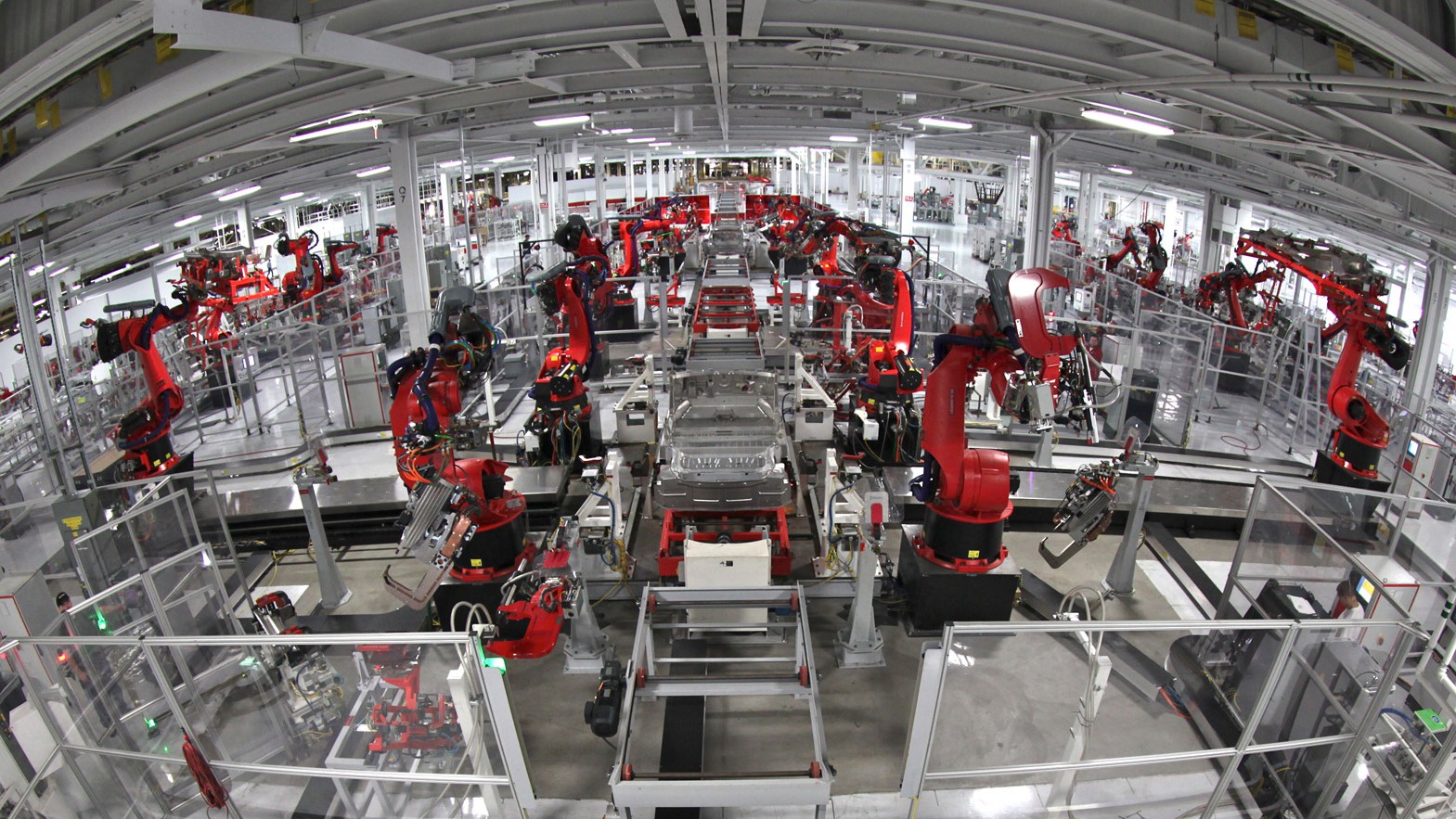Computers have penetrated every commercial, leisure, and industrial endeavor: they’re as ubiquitous as oxygen and just as necessary.
However, not every venture takes place in a perfectly climate-controlled environment of ideal humidity and temperature. In fact, most manufacturing and industrial jobs occur in zones of either intense heat, freezing cold, crippling humidity, or extreme dust and dirt contamination.
But a constant need for computers mixed with computer-killing environments is a contradiction that must be untangled, especially in the face of heavy automation and the need for connected devices in all industries.
Learn what adverse environments can do to a computer, and how purpose-built industrial tablets and industrial all-in-one computers handle these unique difficulties.
When a Computer Gets Too Hot
Article Guide
By far the most common enemy of a computer’s long-term durability is heat. Excessive heat not only slows the computer down but can ultimately damage and destroy vital components and require either heavy repair or total replacement.
What is “Too Hot?”
Computers can operate up to 150 degrees Fahrenheit, or 70 degrees Celsius comfortably, though the ideal temperature is far below, and extended uses at these temperatures will still cause damage over time.
While this may seem a perfectly manageable number — what workplace goes beyond 150 degrees Fahrenheit? — it’s important to remember that computers are hardly room temperature. The components of a computer produce their own heat, which pushes the temperature far above its outside conditions even in a temperate environment.
Add something like a non-climate controlled factory, an ironworks, or any outdoor operations in a hot climate, and the computer will spike to that temperature (and well beyond) with little trouble.
What’s the Damage?
So what exactly does heat do to a computer?
First off, heat actually lowers the electrical resistance of components, which increases the current running through sensitive parts. This increased electrical load not only produces more heat but will fry components over time.
Heat also damages batteries and lowers battery effectiveness, a particular problem for tablets and other devices. Heat expands the platter on hard drives, too, potentially making data unusable or damaged. Extreme temperatures can even melt solder, which can cause motherboard parts to literally fall off.
Even mild overheating will trigger built-in fail-safes (called automatic thermal-throttling) on most modern computers, either slowing the processor down or forcing the computer to shut down frequently to preserve itself.
The short lifespan of most consumer-grade computers used in industrial capacities is almost always due to heat.
The Advantage of a Rugged Industrial Computer
That’s where a rugged computer or rugged industrial tablet has a huge advantage over off-the-shelf PCs.
For one, industrial computers are often designed fanless, meaning the cooling systems of the device don’t require moving parts. Fans are relatively small and fragile, but their importance is through-the-roof in a hot environment. One small malfunction, one busted fan, and the computer can easily break down from overheating. A fanless industrial computer doesn’t rely on its fan (obviously) and is usually built from highly durable military-grade components that can handle a far wider range of temperatures.
And since industrial PCs and tough tablets are built with low power components specifically designed to prevent overheating, they’re less likely to reach high temperatures in the first place.
When a Computer Gets Too Cold
Though not nearly as common or as detrimental, a computer getting too cold can actually cause other problems. Perhaps computers are left off overnight in a poorly insulated shed, or just have to operate in freezing temperatures as a normal part of operations.
For the most part, cold is actually beneficial to a computer, preventing all of the problems of overheating we mentioned earlier. However, there are a few unique dangers for industrial computers in low-temp environments, which is why a rugged mini pc or rugged tablet is so important for sub-optimal environments.
What Happens to a Frozen Computer?
With standard components, cold circuits will actually expand and deform under the sudden blast of heat and electricity when powered up.
Any part made of liquid crystal (like an LCD) can freeze and shatter, as well. An often overlooked danger of a cold computer, too, is with hard drives that use fluid dynamic bearings to spin the physical hard disk platter. Should the fluid in the bearings thicken, then the platter spins slower, and the computer writes and retrieves data at a greatly reduced rate.
Finally, cold temperatures create more condensation inside the computer. This water can then cause shorts and corrosion over time.
Coming in From the Cold
A dedicated rugged industrial computer or fanless mini PC can operate at far lower temperatures and are far less vulnerable to most of these threats.
A sealed case and fanless design prevent most of the condensation, while military-grade parts are far less likely to warp. Finally, because rugged industrial computers often come with more drop-friendly SSD hard drives, they don’t have hard disk platters or fluid bearings and are thus immune to the deleterious effects to data storage.
When the Environment is Too Humid
Perhaps the least surprising fact: computers don’t like water. This is right up there with “dogs don’t like cats” and “sharp things hurt.” Still, while everyone is aware of the damage a can of soda can do to a computer, it’s easy to forget that the water in the air can cause plenty of problems too.
Like being in a cold environment, a humid environment creates more condensation inside the computer itself. And since there’s more water in the air to begin with, the condensation is subsequently worse. Water causes metallic parts to corrode, which can lead to circuits losing conductivity and failing in dozens of places.
One of the worst (or at least unpleasant) effects of high-humidity and consumer computers is caused by dust. An unsealed computer or tablet that uses fans and vents tends to pull in a lot of dust over time. However, in a humid environment (with the effects of condensation), that dust can turn into a kind of pasty sludge that’s very difficult to remove. And, because the substance is denser, it causes even more damage to sensitive parts (and can lead back to over-heating, especially if the filmy mud is clogging fans or covering heatsinks).
A rugged industrial computer, on the other hand, is sealed from water and dust intrusion, and is thus far more resistant to water, dust, sludge, and condensation and can survive in far more humid environments than its consumer-grade cousin.
When the Environment is Too Dry
Though it’s far less of an issue than most of the other environments on this list, it’s important to know that humidity isn’t the only problem. When the air is too dry, there is a small danger that can affect any computer.
It turns out that humidity below 35% significantly increases levels of static electricity. When combined with heat, dry air can actually produce static discharges that can fry components and potentially harm users.
Computers That Can Survive Industrial Conditions
Computers used for agriculture and field science are often exposed to heat through direct sunlight and local temperatures, while computers in refrigerated areas or used for research in cold climates suffer their own unique risks. Computers in other regions struggle with humidity every day. However, inclement weather is no reason why a factory has to shut down, not with the right computer at hand.
No matter the climate, factory conditions, humidity level or temperature, standard computers simply don’t last very long for industrial applications.
To learn more about how rugged industrial computers survive and thrive in whatever grueling conditions you can come up with, contact Cybernet today.
The Role of Industrial Computers in Industrial Automation
July 2, 2020
Industrial automation, as the name suggests, refers to using industrial computers in order to automate industrial processes. It may be understood as an umbrella term for computer automation of design, manufacturing and…
0 Comments9 Minutes
The Use of Industrial Computers in the Aerospace Sector
September 17, 2015
Over recent years, industrial computers have come to take on a critical role in a number of professions. The aerospace industry is one sector that has come to rely on the use of these devices to address a number of…
0 Comments4 Minutes
You Can't
Learn from a Pop-up
But we can deliver knowledge to your inbox!
We dive deep in the industry looking for new trends, technology, news, and updates. We're happy to share them with you.
Knowledge, News, and Industry Updates Right in Your Inbox




